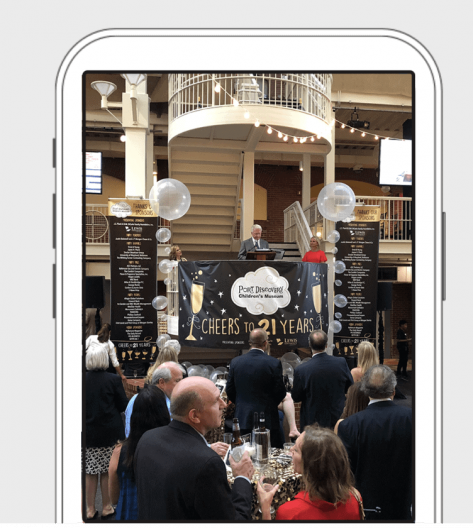The COVID-19 lockdown in March 2020 sparked rapid adoption of event technology in the industry. This technology has allowed events to continue remotely during quarantine and permitted companies to select the format most suitable for their needs even after resuming in-person business. Whether you’re seeking a live, hybrid, or virtual presentation, event technology will be incorporated into your event in some way, and it’ll allow you to drastically expand your reach.
Let’s discuss the various facets surrounding event technology, how the technology is incorporated into each format, and why it can dictate the success of your event.
What is Event Technology?
Event technology is any digital tool, software, or machine that makes it easier to plan or execute an event. Today, 9 in 10 event professionals agree that technology can positively impact their events. The goal of using event technology is to provide a better user experience for attendees whether they’re virtual or in-person. Here are some examples of event technology:
- Audio-Visual services
- Virtual event platforms
- Streaming services
- Social media tools
- Engagement tools
- AI chatbots
- Registration software
- Marketing platforms
- Intelligent lighting
- Event management software
- Wearable “smart” technology
- Website builders
- Mobile apps
- Electronic health and safety equipment
- Floor plan diagramming and 3d software
These technologies are the best way to meet your event goal. They allow you to plan with confidence, welcome more people to your event, and make more informed decisions about the event experience. If you haven’t used one of these technologies previously, now is the time to start.
Formatting an Event Using Event Technology:
When creating an event, event technology has three formats (rather than one) to dominate the space. You can choose to host a live event incorporating event technology with in-person participants. You can opt for a virtual event hosting participants online. Or you can meet in the middle with a hybrid model — some people joining in person and some streaming the event from a distance.
Here’s a look at all three formats and how event technology fits in:
How to Use Event Technology:
One challenge with event technology is integration. Whether you’re not a “tech-savvy” person or your company has some resistance to change, integrating all the event technology you need for success may be a bit daunting.
Fortunately, you have event planning and production teams all around you that are able to provide guidance on what tools they think may be best for you. Additionally, plenty of event tech tools are at your fingertips to experiment with and discover what you like. The great thing about technology is that it can be used in a variety of ways. If gamification or big bog graphics don’t excite you, then you don’t have to use it, you can utilize event technology for analytics or customization instead.
Here are some more in-depth examples of how to use event technology if you’re thinking to have it as part of your planning and execution.
Final Thoughts:
One challenge with event technology is integration. Whether you’re not a “tech-savvy” person or your company has some resistance to change, integrating all the event technology you need for success may be a bit daunting.
Fortunately, you have event planning and production teams all around you that are able to provide guidance on what tools they think may be best for you. Additionally, plenty of event tech tools are at your fingertips to experiment with and discover what you like. The great thing about technology is that it can be used in a variety of ways. If gamification or big bog graphics don’t excite you, then you don’t have to use it, you can utilize event technology for analytics or customization instead.
Here are some more in-depth examples of how to use event technology if you’re thinking to have it as part of your planning and execution.

How we can help:
Our team has years of experience producing virtual events and we would be happy to assist in producing yours! Since the onset of COVID-19 we have helped to plan and produce dozens of different events, ranging anywhere from graduations to corporate meetings and fundraising galas. To find out how we can help make your event a success reach out to us:
Phone: 443-384-0040
Email: [email protected]
